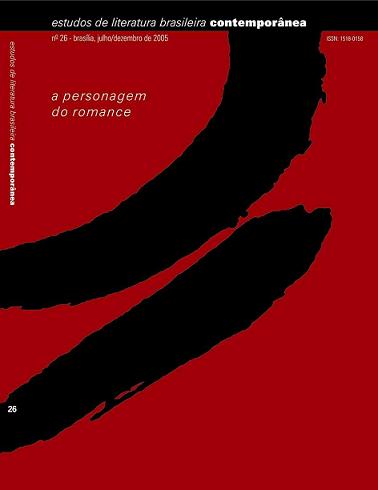Metáfora animal:
a representação do outro na literatura
Abstract
Em seu livro The open: man and animal, Giorgio Agamben argumenta que, embora a idéia do “humano” na sociedade ocidental tenha sido pensada, desde sempre, como uma misteriosa conjunção de um corpo natural e de um elemento sobrenatural, social ou divino, é preciso aprender a pensar o “humano” como o resultado de uma prática e de uma política intencional e deliberada de separação entre “humanidade” e “animalidade”. Baseando-nos nos conceitos deste crítico, e de outros como John Berger, W. J. T. Mitchell e Cary Wolfe, percorremos alguns textos de autores brasileiros, como Graciliano Ramos, Guimarães Rosa, Clarice Lispector e Osman Lins, analisando como a metáfora animal é utilizada para representar o ser humano abjeto, em condições de sujeição, marginalização e degradação, o que não só revela o modo como o “humano” pode vir a se relacionar com os seus semelhantes em situações adversas, mas também o modo como esse relacionamento reproduz o preconceito atávico de sua superioridade sobre a natureza e os animais.
Downloads
References
AGAMBEN, Giorgio. The open: man and animal. California: Stanford University Press, 2002.
APPOLINAIRE, Guillaume. O bestiário ou cortejo de Orfeu. São Paulo: Iluminuras, 1977.
ARENDT, Hannah. Sobre a violência. Rio de Janeiro: Relume-Dumará, 1994.
BALTRUSAITIS, Jurgis. “Fisiognomonia animal”, em Aberrações: ensaio sobre a lenda das formas. Rio de Janeiro: Editora da UFRJ, 1999.
BANDEIRA, Manuel. “O bicho”, em Estrela da vida inteira. Rio de Janeiro: José Olympio, 1986.
BAUDRILLARD, Jean. À sombra das maiorias silenciosas. São Paulo: Brasiliense, 1986.
BERGER, John. “Por que olhar os animais?”, em Sobre o olhar. Barcelona: Editorial Gustavo Gili, 1980.
BORGES, Jorge Luis. O livro dos seres imaginários. São Paulo: Globo, 1989.
CORTÁZAR, Julio. Bestiário. Argentina: Puncto de Lectura, 2004.
DURAND, Gilbert. “As faces do tempo”, em As estruturas antropológicas do imaginário. São Paulo: Martins Fontes, 2002.
FERREIRA, Ermelinda. Cabeças compostas: a personagem feminina na narrativa de Osman Lins. São Paulo: Edusp, 2005.
HOWLETT, Jana e MENGHAM, Rod. The violent muse: violence and the artistic imagination in Europe, 1910-1939. Manchester e New York: Manchester University Press, 1994.
LINS, Osman. Nove, novena. Rio de Janeiro: Guanabara, 1987.
______. Avalovara. São Paulo: Melhoramentos, 1973.
______. A rainha dos cárceres da Grécia. São Paulo: Melhoramentos, 1976.
LISPECTOR, Clarice. Laços de família. Rio de Janeiro: Nova Fronteira, 1986.
LORENZ, Konrad. E o homem encontrou o cão. Lisboa: Relógio D’Água, 1997.
MAILLARD-CHARY, Claude. Le bestiaire des surrealistes. Paris: Presses de la Sorbonne Nouvelle, 1994.
MITCHELL, W. J. T. “Illusion: looking at animals looking”, em Picture theory. Chicago and London: The University of Chicago Press, 1994.
MORAES, Eliane Robert. “O bestiário modernista”, em O corpo impossível: a decomposição da figura humana de Lautréamont a Bataille. São Paulo: Iluminuras, 2002.
MORRIS, Desmond. O contrato animal. Rio de Janeiro: Record, 1990.
______. O macaco nu: um estudo do animal humano. Rio de Janeiro: Record, 2004.
______. A mulher nua: um estudo do corpo feminino. São Paulo: Globo, 2005.
ORWELL, George. A revolução dos bichos. Trad. de Heitor Ferreira. Porto Alegre: Globo, 1983).
PATTERSON, Charles. Eternal Treblinka: our treatment of animals and the holocaust. New York: Lantern Books, 2002.
RAMOS, Graciliano. Vidas secas. Rio de Janeiro: Record, 1977.
ROSA, Guimarães. Grande sertão: veredas. Rio de Janeiro: Nova Fronteira, 1986.
WOLFE, Cary. Zoontologies. Minneapolis/London: University of Minnesota Press, 2003.
______. Animal rites: american culture, the discourse of species and posthumanist theory. Chicago and London: The University of Chicago Press, 2003.
Downloads
Published
How to Cite
Issue
Section
License
Authors who publish in this journal agree to the following terms:
a) The authors maintain the copyright and grant the journal the right of first publication, the work being simultaneously licensed under the Creative Commons Attribution License-Non Commercial 4.0 which allows the sharing of the work with acknowledgment of the authorship of the work and publication this journal.
b) Authors are authorized to enter into additional contracts separately, for non-exclusive distribution of the version of the work published in this journal (eg publish in institutional repository or as a book chapter), with authorship recognition and publication in this journal.
c) Authors are allowed and encouraged to publish and distribute their work online (eg in institutional repositories or on their personal page) after the editorial process, as this can generate productive changes, as well as increase the impact and citation of published work (See The Effect of Free Access).
d) The authors of the approved works authorize the magazine to, after publication, transfer its content for reproduction in content crawlers, virtual libraries and the like.
e) The authors assume that the texts submitted to the publication are of their original creation, being fully responsible for their content in the event of possible opposition by third parties.


